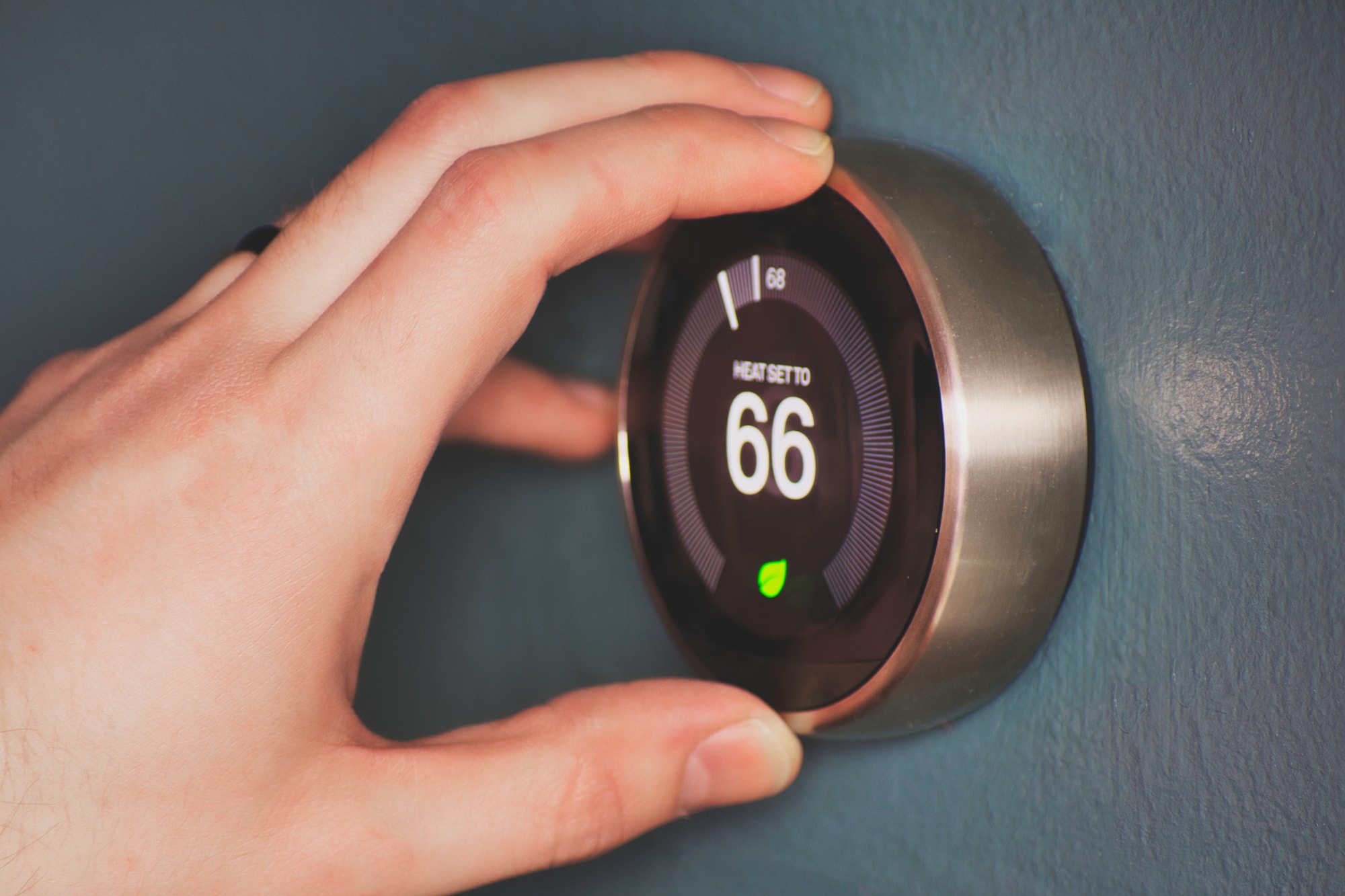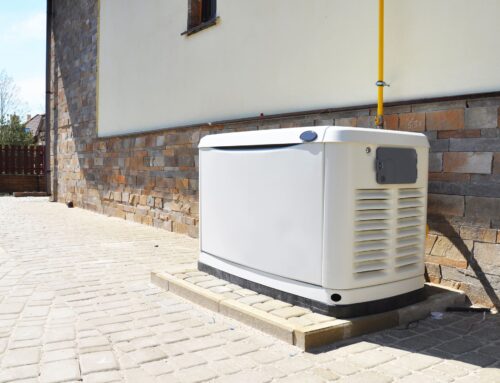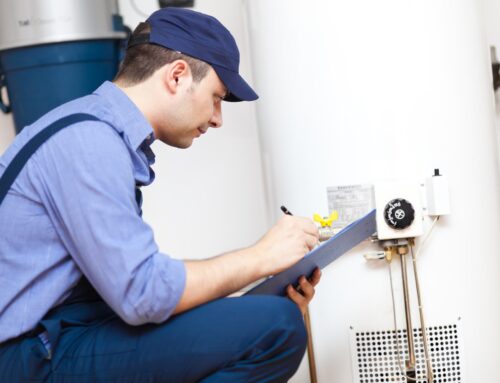Are smart thermostats and occupancy sensors the key to unlocking significant energy savings for homes and businesses by making intelligent temperature adjustments and avoiding unnecessary heating? The crucial role of smart thermostats and intelligent devices in energy management is making waves, offering key advantages and key benefits, as well as insights into optimizing heating and cooling systems. These innovative devices are revolutionizing how individuals approach building energy efficiency, home cooling, and technology in traditional thermostats and buildings. By harnessing advanced technology, smart thermostats provide a range of features aimed at reducing energy consumption and benefiting home cooling and air conditioning systems. Let’s delve into the transformative impact technology and traditional thermostats are having on energy management.
Understanding Smart Thermostats
Core Functions
Smart thermostats offer temperature control and scheduling features, allowing users to set preferred temperatures and create personalized schedules for energy savings and increased energy efficiency, thereby reducing energy bills. These core functions are essential for efficient energy management. For instance, users can program smart devices like the thermostat to lower the temperature while they’re away at work and increase it shortly before returning home, resulting in energy savings and improved energy efficiency, which can help lower energy bills.
The ability to analyze usage patterns through intelligent algorithms enables smart thermostats in IoT buildings to optimize HVAC systems for better energy management. By adjusting settings based on real-time data, these devices contribute significantly to cost savings and environmental sustainability in buildings.
Energy Management
One of the primary roles of smart thermostats in buildings is their contribution to effective energy management through optimizing HVAC systems. This is achieved by analyzing usage patterns and making automatic adjustments accordingly to achieve energy savings and energy efficiency in smart devices and buildings. For example, if a user consistently lowers the temperature during certain hours, the smart thermostat will learn this pattern and make adjustments without manual intervention, leading to energy savings and increased energy efficiency.
By seamlessly integrating with IoT devices such as smartphones or voice assistants, smart thermostats allow users to remotely control their settings from anywhere to increase energy efficiency in buildings. This integration also provides access to real-time data for enhanced energy management capabilities in building IoT.
IoT Integration
Smart thermostats, with user-friendly interfaces, enable intuitive navigation and quick adjustments to temperature settings, promoting energy efficiency in buildings. With an easy-to-use interface, users can take control of their energy management in a building effortlessly without needing technical expertise or extensive training.
Benefits of Smart Thermostats
Energy Conservation
Smart thermostats in buildings play a crucial role in energy conservation by optimizing heating and cooling cycles based on occupancy patterns. They achieve this through automated adjustments that minimize unnecessary energy usage in buildings using IoT. For example, when no one is home in the building, the IoT thermostat can adjust the temperature to save energy. By prioritizing energy conservation, smart thermostats contribute to reducing carbon footprints and preserving natural resources in building.
These IoT devices help building users save on energy costs by efficiently managing HVAC systems. This is achieved through features like energy usage reports, personalized settings, and building IoT. By optimizing energy consumption, smart thermostats provide long-term cost savings for homeowners and businesses in the IoT building.
Cost Savings
Smart thermostats in buildings make automated adjustments to temperature settings based on user preferences and occupancy patterns. These adjustments ensure optimal comfort while minimizing energy waste. With automated adjustments, smart thermostats offer a hassle-free approach to energy management in buildings.
Smart Thermostats and AC Efficiency
Temperature Precision
Smart thermostats, equipped with advanced sensors and algorithms, ensure precise temperature control, enhancing both comfort and energy efficiency in the iot. These devices maintain desired temperatures accurately, providing a superior heating and cooling experience with IoT technology. For example, if you set the IoT thermostat to 72°F, it will consistently maintain that temperature without unnecessary fluctuations. This precision not only keeps your indoor environment comfortable but also reduces energy waste by preventing overcooling or overheating with IoT.
Moreover, the precise control offered by smart thermostats and IoT allows for optimized use of your air conditioning system. Instead of running constantly to reach a general temperature range, the IoT system can efficiently cycle on and off as needed to maintain the specific temperature set on the thermostat. This prevents unnecessary strain on the AC unit while ensuring consistent comfort within your living space with iot.
Seasonal Adjustments
One remarkable feature of smart thermostats is their ability to automatically adjust settings based on seasonal changes and IoT. These adjustments account for variations in weather conditions throughout different times of the year, optimizing energy efficiency without compromising comfort with iot. For instance, during warmer months, a smart thermostat can adapt by adjusting cooling schedules according to increased outdoor temperatures.
By adapting to seasonal changes seamlessly, these devices contribute significantly to reducing overall energy consumption associated with air conditioning systems in homes or businesses.
Maintenance Alerts
In addition to precise temperature control and seasonal adjustments, smart thermostats offer valuable maintenance alerts for HVAC systems. These alerts notify users when filters need cleaning or when professional servicing is required for optimal operation of air conditioning units. By promptly addressing maintenance needs through these alerts, individuals can prolong the lifespan of their HVAC equipment while ensuring its continued efficient performance.
Role in Green Buildings
Sustainable Practices
Smart thermostats play a crucial role in green buildings by promoting sustainable practices. They achieve this by reducing energy waste and carbon emissions, thereby contributing to a greener future. These devices encourage sustainable practices through features like energy certifications and eco-friendly operation modes. For instance, they are designed to optimize heating and cooling systems, ensuring that energy is used efficiently while minimizing environmental impact.
By embracing sustainable practices, smart thermostats align with the goals of green buildings, which prioritize environmentally friendly and resource-efficient processes. As a result, these devices are instrumental in creating more environmentally responsible buildings that minimize their ecological footprint.
Energy Certifications
One way smart thermostats contribute to green buildings is through their association with energy certifications such as ENERGY STAR® rating. These certifications validate the efficiency and environmental friendliness of smart thermostat models. By choosing an energy-certified smart thermostat, users can be confident in their commitment to energy management, knowing that they are using a device recognized for its positive impact on the environment.
Energy certifications also provide consumers with assurance regarding the performance of these devices in optimizing energy usage within green buildings. This contributes significantly to the overall sustainability efforts of such structures by ensuring that they meet stringent efficiency standards.
Occupant Comfort
In addition to promoting sustainability within green buildings, smart thermostats prioritize occupant comfort by maintaining desired temperatures and adapting to user preferences. Features like personalized settings and learning algorithms further enhance occupant comfort by tailoring indoor climate control according to individual needs.
Optimization with Smart Thermostats
Custom Scheduling
Smart thermostats, unlike traditional thermostats, offer a remarkable feature known as custom scheduling. This functionality empowers users to create personalized schedules for their heating and cooling requirements. By aligning temperature settings with daily routines and occupancy patterns, individuals can ensure optimal comfort while minimizing energy wastage. For instance, if a household is typically unoccupied during working hours, the smart thermostat can be programmed to reduce heating or cooling output during that time.
Moreover, custom scheduling enables households to tailor their HVAC system’s operations based on specific needs. Whether it’s adjusting the temperature before waking up in the morning or lowering it when leaving for work, these devices provide tailored solutions for efficient energy management.
Learning Algorithms
One of the most significant advantages of smart thermostats is their utilization of advanced learning algorithms. These algorithms analyze user behavior and preferences over time, adapting settings to optimize energy consumption continuously. For example, if a user consistently adjusts the thermostat at certain times or temperatures, the device learns from these patterns and automatically makes similar adjustments in the future without requiring manual input.
By employing learning algorithms, smart thermostats offer an intelligent approach to energy management by recognizing usage patterns and making automatic adjustments accordingly.
Data Analysis
In addition to custom scheduling and learning algorithms, smart thermostats excel in performing detailed data analysis related to energy consumption habits. This data-driven approach helps users gain insights into their HVAC system’s performance by identifying usage patterns and areas where efficiency can be improved.
Remote Monitoring Benefits
Accessibility
Smart thermostats prioritize accessibility with features like remote control and voice command integration. Users can manage their thermostat from anywhere using smartphones or voice assistants, offering convenience and flexibility in energy management. For example, if you’re on vacation and forgot to adjust the temperature at home, a smart thermostat allows you to do so remotely, ensuring energy isn’t wasted while you’re away.
The enhanced accessibility of smart thermostats empowers users to make real-time adjustments based on their schedules or unexpected changes in plans. This level of control ensures that energy is utilized efficiently without compromising comfort.
Real-time Data
In addition to remote control capabilities, smart thermostats provide real-time data on energy usage, temperature trends, and system performance. This information enables users to monitor and track their energy consumption for better decision-making regarding usage patterns and potential savings opportunities.
By having access to real-time data through your smartphone or other devices, you can gain insights into how your heating or cooling systems are operating throughout the day. For instance, if you notice an unusual spike in energy usage during certain hours when no one is home, it could indicate a problem that needs attention.
System Diagnostics
Moreover,system diagnostics offered by smart thermostats help detect potential issues with HVAC systems promptly. Identifying malfunctions or inefficiencies early allows for timely repairs or adjustments before they escalate into more significant problems that may consume additional energy.
Key Features Explained
Sensors and Algorithms
Smart thermostats rely on sensors to gather data and employ algorithms to make intelligent decisions. These sensors detect temperature, occupancy, and other environmental factors, enabling precise control over the indoor climate. By combining these sensors with advanced algorithms, smart thermostats can optimize energy management based on real-time information. For example, if a room is unoccupied for an extended period, the thermostat can adjust the temperature to conserve energy.
The utilization of sensors and algorithms in smart thermostats enables them to adapt proactively to changing conditions within a home or building. This proactive approach ensures that energy consumption is optimized without sacrificing comfort or convenience.
-
Sensors gather data
-
Algorithms make intelligent decisions
-
Precise control over indoor climate
Compatibility
One of the key benefits of smart thermostats is their broad compatibility with various heating and cooling systems such as HVAC units and heat pumps. This compatibility ensures seamless integration with existing infrastructure, making installation hassle-free for users looking to upgrade their current systems. With this broad compatibility, smart thermostats offer versatile solutions for different energy management needs.
The wide-ranging compatibility of smart thermostats makes them accessible to a broader range of users who may have different types of heating and cooling systems installed in their homes or commercial properties.
-
Seamless integration with existing infrastructure
-
Versatile solutions for various energy management needs
Energy Reports
Smart thermostats provide valuable energy reports that offer insights into usage patterns and efficiency levels. These reports help users track their energy consumption trends over time and identify areas where improvements can be made. By offering detailed energy reports, smart thermostats enable informed decision-making in energy management by providing actionable data that empowers users to make positive changes.
Maximizing Comfort and Savings
Personalized Settings
Smart thermostats play a crucial role in energy management by offering personalized settings for optimal comfort and improved energy efficiency. Users can customize temperature, scheduling, and preferences to create a tailored indoor environment that meets their specific comfort needs. By tailoring these settings, individuals can optimize energy usage while enjoying a comfortable living space. For example, if someone prefers a cooler bedroom at night but warmer temperatures during the day, they can easily program these preferences into the smart thermostat.
Moreover, the ability to set different temperatures based on occupancy patterns allows for even greater energy savings without sacrificing comfort. This personalized approach ensures that homes remain comfortable when occupied while conserving energy when no one is home.
Geofencing Technology
Another essential feature of smart thermostats is their use of geofencing technology to automatically adjust temperature settings based on user location. When users leave home, the thermostat adjusts the temperature to conserve energy until they return. As soon as occupants are detected within proximity of their residence, the smart thermostat readjusts to ensure that a comfortable environment awaits them upon arrival.
This seamless automation not only enhances convenience but also contributes significantly to efficient energy management by avoiding unnecessary heating or cooling when no one is present in the home.
Adaptive Cycles
Smart thermostats utilize adaptive cycles that learn from user behavior over time and make automatic adjustments accordingly. By analyzing occupancy patterns and temperature preferences, these devices optimize heating and cooling schedules to minimize energy consumption while maintaining optimal comfort levels throughout different times of day or week.
The dynamic nature of adaptive cycles ensures responsive energy management, allowing homeowners to enjoy improved comfort without compromising on sustainability.
Integration with Management Systems
Centralized Control
Smart thermostats provide centralized control over multiple zones or rooms within a building. This means users can manage temperature settings in different areas from a single interface. For instance, during the winter, you can keep the living room warm while lowering the temperature in unoccupied bedrooms.
By offering centralized control, smart thermostats simplify energy management for larger spaces. This feature maximizes comfort and savings by ensuring that each zone receives the appropriate heating or cooling without wastage.
Performance Tracking
Incorporating performance tracking, smart thermostats monitor system performance and offer insights into energy efficiency levels. By evaluating this data, users can assess the effectiveness of their energy management strategies. For example, they might discover that certain areas are consistently using more energy than others and adjust accordingly to optimize efficiency.
This feature facilitates continuous improvement in energy consumption by providing real-time feedback on how heating and cooling systems are operating throughout a building.
Predictive Maintenance
Smart thermostats utilize predictive maintenance algorithms to anticipate potential issues with HVAC systems. These algorithms help prevent breakdowns and optimize equipment performance by identifying when maintenance is needed before an actual problem arises.
There Is A Significant Impact On Energy Management
You’ve learned about the significant impact of smart thermostats on energy management. From optimizing AC efficiency to enabling remote monitoring, these devices play a crucial role in promoting sustainability and cost savings. By integrating them into management systems, you can maximize comfort while minimizing energy consumption. As you consider the benefits of smart thermostats, think about how they can contribute to creating greener buildings and reducing your carbon footprint.
Now, it’s time to take action. Explore how smart thermostats can fit into your energy management strategy and make a difference in your daily life. Whether it’s for your home or business, embracing this technology can lead to a more sustainable future. Start your journey towards efficient energy management today!
Frequently Asked Questions
What are smart thermostats?
Smart thermostats are advanced devices that can be programmed to adjust the temperature of your home based on your schedule, preferences, and energy efficiency goals. They offer remote control via smartphone apps and often include features like learning algorithms to optimize energy usage.
How do smart thermostats contribute to energy management?
Smart thermostats play a crucial role in energy management by optimizing heating and cooling systems, reducing overall energy consumption, and providing insights into usage patterns. Their ability to monitor and adjust settings remotely helps users make informed decisions for efficient energy use.
Can smart thermostats improve AC efficiency?
Yes, smart thermostats can significantly enhance AC efficiency by regulating temperatures according to occupancy patterns and external conditions. By avoiding unnecessary cooling when spaces are unoccupied or adjusting settings based on real-time data, they help minimize wastage while maintaining comfort levels.
Are there benefits of integrating smart thermostats with building management systems?
Integrating smart thermostats with building management systems allows for centralized monitoring and control of HVAC systems across an entire facility. This integration enhances operational efficiency, enables proactive maintenance measures, and provides comprehensive insights for better decision-making.
How do smart thermostats maximize comfort while saving energy?
Smart thermostats achieve this balance through personalized scheduling, adaptive learning algorithms, and real-time adjustments based on environmental factors. By customizing temperature settings according to individual preferences without compromising efficiency, they ensure optimal comfort while minimizing energy costs.





